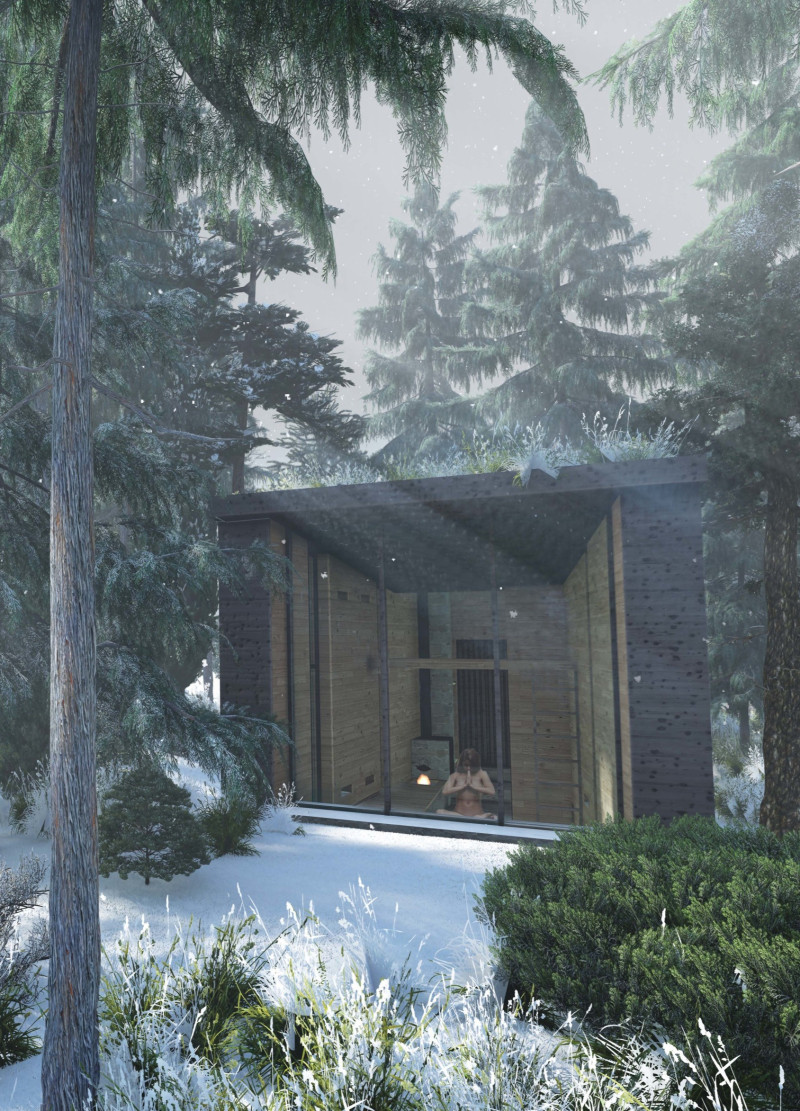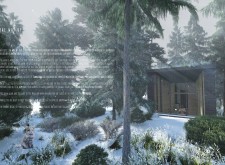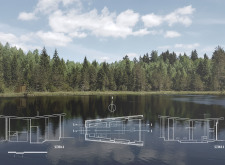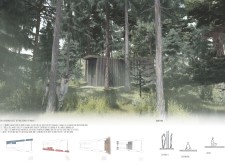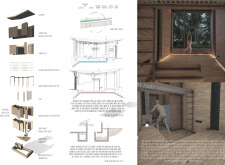5 key facts about this project
The function of this architectural design extends beyond mere shelter; it serves as a sanctuary aimed at promoting mental wellness. Essential to this project is the idea of creating spaces that facilitate contemplation and relaxation. The design incorporates various elements that support this vision, from open, light-filled interiors to intimate nooks specifically designed for meditation. Each space within the cabin is thoughtfully arranged to influence the occupant's mood, guiding them gradually from the outside world into a realm of tranquility.
Several important components of the project reinforce its intent. Large glass panels are used extensively to facilitate a seamless connection between the interior and the outdoors, allowing occupants to feel immersed in the surrounding natural beauty. This choice of material not only enhances visibility but also contributes to energy efficiency by maximizing natural light. The wooden elements used in the structure and cladding provide a warm aesthetic and help the cabin blend into its environment, underscoring the project's commitment to sustainability.
The integration of a green roof exemplifies the unique design approach taken in this project. This feature not only insulates the structure but also encourages biodiversity by allowing vegetation to thrive on the rooftop. The sustainability aspect is further emphasized through the use of eco-friendly materials and systems, such as mineral wool insulation and a composting toilet, which reduce the ecological footprint of the building while promoting efficient resource use.
Architecture in this project engages with the four elements of nature: Earth, Water, Air, and Fire. Each element is symbolically represented throughout the design, reinforcing the conceptual foundation and inviting occupants to reflect upon their relationship with the natural world. Such a design philosophy enhances the emotional resonance of the space, emphasizing its dual purpose as both a physical environment and a conduit for personal growth.
Unique features, such as wildlife observation points, encourage interaction with the surrounding ecosystem, engaging occupants beyond the boundaries of the cabin itself. This focus on creating a contemplative environment harmonizes with the overarching theme of mindfulness and well-being.
Given the various architectural ideas and designs presented, the project serves as an invitation for exploration. Readers are encouraged to delve further into the architectural plans and sections to fully appreciate the nuances of this retreat. By understanding the meticulous approach to each design element, one can gain deeper insights into how architecture can thoughtfully respond to the needs of its occupants while promoting a profound connection to nature.


